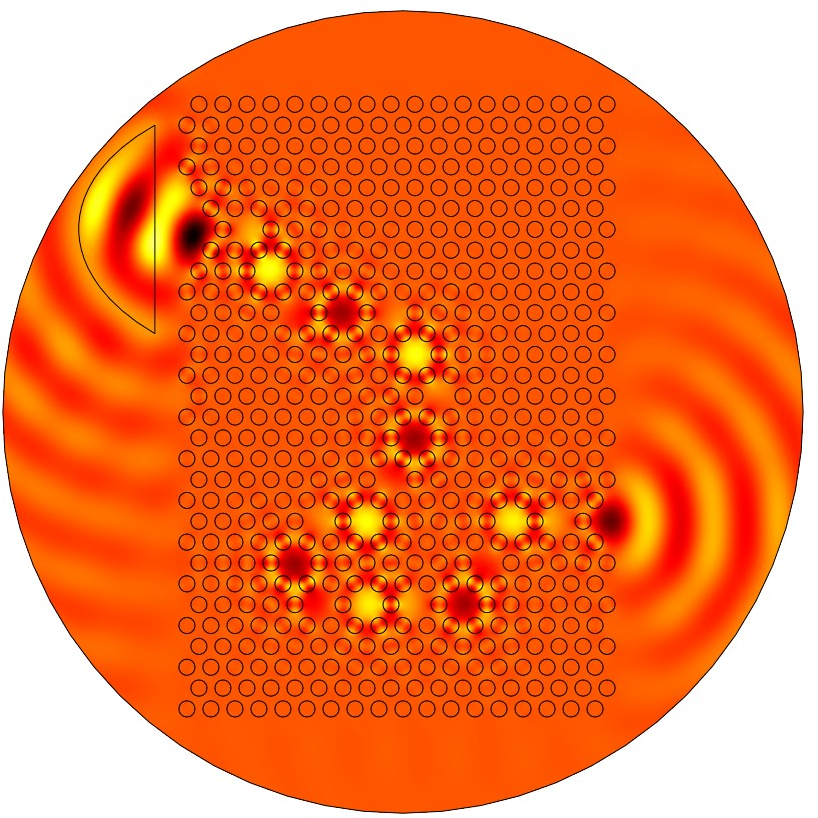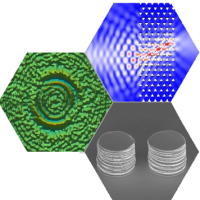Numerical simulation
Models for phononics
The Phononics and Microscopy group is developing a range of models that are being applied in its research for design, understanding, and comparison with experiments. These models include:
- Band structures of phononic crystals, including solid-hole, solid-solid, and fluid-solid compositions,
- Complex band structures for all compositions, in order to harness evanescent Bloch waves,
- Transmission through phononic and sonic crystals, and acoustic metamaterials, including elastic and acoustic perfectly matched layers,
- Heat transfer in microsystems, including thermal contact resistance,
- Surface acoustic waves in piezoelectric solids (generation, propagation in thick interdigital transducers and arrays of pillars),
- Wave couplings such as photoelasticity, electrostriction, Brillouin scattering, opto-mechanical coupling, thermoelasticity, etc.
  |
Numerical simulation
Implementation of the models are performed with various languages or programs to cover the widest possible range of materials and geometries, with an emphasis on the finite element method. Here is a non exhaustive list:
- Comsol Multiphysics models for solving the differential equations of phononic crystals, elastic and acoustic waves, the heat equation, and optics,
- FreeFem++ and gmsh (open source software) for the same purposes.
Looking for such modeling and simulation capabilities for your projects? We are willing to develop new methods and new models, and to produce brilliant simulations. :-)

